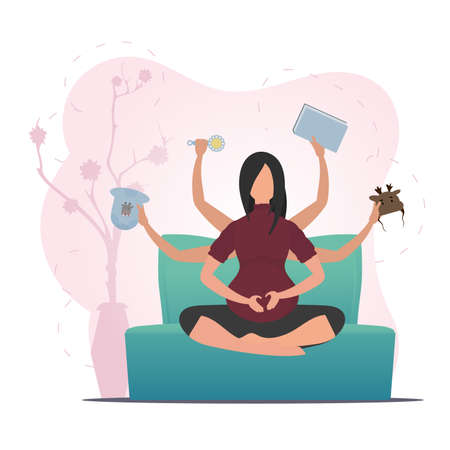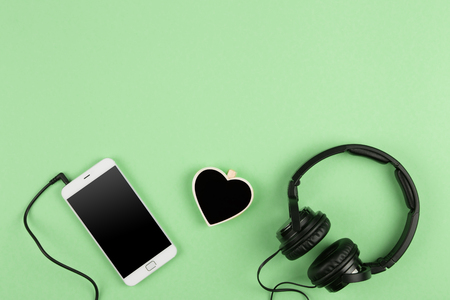Introduction to Mind-Body Connection
The mind-body connection is a foundational concept in understanding overall health, reflecting the intricate relationship between mental and physical wellbeing. In recent years, this connection has gained significant attention within the UK’s healthcare landscape, emphasising the importance of holistic approaches to wellness. The NHS and various British academic institutions have increasingly recognised how psychological states can influence physical health outcomes, and vice versa. Notably, research from universities such as King’s College London and University College London has explored how stress, anxiety, and emotional distress may manifest physically, affecting everything from immune response to cardiovascular health. Furthermore, the UK government’s focus on integrated care underscores a growing consensus: addressing both mental and physical aspects is crucial for effective prevention and intervention strategies. As we explore the influence of art and music therapies on this dynamic interplay, it is essential to appreciate how interconnected our minds and bodies truly are—a perspective deeply rooted in both scientific evidence and British cultural values around comprehensive healthcare.
2. Understanding Art and Music Therapies
Art and music therapies are recognised therapeutic modalities that harness creative processes to foster psychological, emotional, and even physical wellbeing. In the context of British healthcare, these therapies have become increasingly integrated into both the NHS and private practice settings over recent decades. Below is a concise overview of their definitions, methodologies, and evolution within the UK.
Definitions and Core Concepts
Art therapy involves the use of visual art materials—such as drawing, painting, or sculpture—within a therapeutic relationship. The process encourages individuals to express feelings that may be difficult to articulate with words alone.
Music therapy, on the other hand, utilises musical interaction (listening, creating, singing, or moving to music) to address emotional, cognitive, and social needs.
Key Methodologies in Practice
| Therapy Type | Methodology | Typical Settings |
|---|---|---|
| Art Therapy | Guided creative activities; reflective discussions; non-verbal expression | Mental health clinics, hospitals, schools, community centres |
| Music Therapy | Improvisation; songwriting; receptive listening; movement to music | NHS trusts, hospices, care homes, special education units |
The British Context: Evolution and Integration
The UK has a rich history of using creative arts in healing. Modern art and music therapy emerged in Britain during the mid-20th century, initially in response to post-war trauma. Over time, these therapies have evolved with support from professional bodies such as the British Association of Art Therapists (BAAT) and the British Association for Music Therapy (BAMT). Today, they are recognised by regulatory councils and play a vital role in multidisciplinary mental health and wellbeing teams across the country.

3. Historical and Cultural Context in the UK
The development of art and music therapies within the UK offers a compelling reflection of the nation’s evolving understanding of mental health and holistic wellbeing. Historically, these therapeutic practices gained significant traction during the mid-20th century, as post-war Britain confronted the psychological aftermath experienced by veterans and civilians alike. Gradually, professional bodies such as the British Association of Art Therapists (BAAT) and the British Association for Music Therapy (BAMT) emerged, setting rigorous standards for practice and training across the country.
Crucially, the National Health Service (NHS) has played an instrumental role in legitimising and integrating creative therapies into mainstream healthcare. Since the late 20th century, NHS trusts have increasingly incorporated art and music therapy services into their offerings—particularly within mental health units, paediatric departments, and rehabilitation centres. This adoption has helped to formalise these therapies as credible interventions that support both physical recovery and emotional resilience, reinforcing the mind-body connection at an institutional level.
Beyond clinical settings, there has been a robust grassroots movement promoting creative therapies through community programmes. Local councils, charities, and arts organisations have collaborated to make these modalities accessible to diverse populations, including older adults, young people, refugees, and those living with chronic illnesses. Noteworthy initiatives like Arts on Prescription schemes allow GPs to refer patients to creative activities as part of a broader approach to social prescribing—a practice that is uniquely rooted in UK healthcare culture.
Furthermore, the multicultural fabric of British society has enriched these therapies with global influences while maintaining distinctly local characteristics. Festivals, workshops, and public installations frequently incorporate participatory art and live music-making as tools for collective healing and community building. Such cultural initiatives not only underscore the value placed on creativity but also highlight the ongoing dialogue between tradition and innovation in supporting holistic wellbeing in the UK.
4. Mechanisms of Influence on Mind and Body
Engaging in art and music therapy yields tangible effects on both brain and body, with mounting evidence from UK-based studies demonstrating these therapies mechanisms of action. Art therapy typically involves creative expression through drawing, painting, or sculpture, while music therapy encompasses listening, performing, or composing music under the guidance of a trained therapist. Both modalities facilitate mind-body integration, but the underlying mechanisms are distinct and multifaceted.
Neurobiological Impact
Recent research by the University of Westminster (2019) highlights that participation in group art therapy sessions leads to measurable reductions in cortisol levels, indicating lower stress. Similarly, studies at King’s College London have shown that music therapy modulates brain activity, particularly within regions responsible for emotion regulation such as the amygdala and prefrontal cortex. These therapies engage the limbic system, which is crucial for emotional processing and memory formation.
| Therapy Type | Primary Brain Region Affected | Key Physiological Response |
|---|---|---|
| Art Therapy | Prefrontal Cortex | Reduced Cortisol (Stress Hormone) |
| Music Therapy | Amygdala & Hippocampus | Improved Heart Rate Variability |
Psychophysiological Benefits
A practical example comes from NHS mental health services in Manchester, where structured music therapy has been shown to improve sleep quality and reduce anxiety among adults with depression. These outcomes are attributed to enhanced vagal tone—a marker of parasympathetic nervous system activity—which supports relaxation and recovery. Art therapy, as implemented in several London hospitals, has been used to help cancer patients process trauma and manage pain perception through distraction techniques and visual narrative construction.
Cognitive-Emotional Integration
Both art and music therapies foster a state of “flow,” allowing individuals to become deeply absorbed in creative tasks. This immersive focus can diminish rumination on negative thoughts and promote cognitive flexibility—key components in resilience against mental distress. For example, a 2021 study conducted by the University of Edinburgh found that dementia patients engaging in weekly music-making sessions exhibited improved memory recall and social interaction compared to control groups.
Summary Table: Mechanisms and Outcomes (UK Context)
| Mechanism | Art Therapy Example | Music Therapy Example |
|---|---|---|
| Stress Reduction | Cortisol decrease after group painting session (Westminster Study) | Lowered anxiety post live music intervention (NHS Manchester) |
| Cognitive Enhancement | Visual problem-solving exercises boost creativity (London Hospitals) | Dementia patients show better recall after choir participation (Edinburgh Study) |
The convergence of neuroscience findings and practical case studies from across the UK underscores how art and music therapies serve as effective bridges between mind and body. Through regular engagement, individuals can harness these modalities not only to alleviate symptoms but also to cultivate long-term wellbeing.
5. Case Studies and Evidence from the UK
Across the United Kingdom, there has been a growing body of real-life case studies and clinical evidence supporting the effectiveness of art and music therapies in strengthening the mind-body connection. Leading NHS Trusts, universities, and local charities have all contributed to a more nuanced understanding of how these creative therapies translate into measurable health outcomes.
Art Therapy at Great Ormond Street Hospital
At Great Ormond Street Hospital in London, art therapy has been integrated into paediatric care for children facing long-term medical conditions. Clinical observations reveal that young patients engaging in regular art sessions report a reduction in anxiety, improved mood, and greater resilience when coping with invasive treatments. These outcomes are attributed not only to creative expression but also to the embodied act of making art, which appears to foster a healthier relationship between mental state and physical wellbeing.
Music Therapy Initiatives in Manchester
Manchester’s Royal Northern College of Music has collaborated with local mental health trusts to deliver music therapy programmes for adults living with chronic pain and depression. A 2022 pilot study reported that participants exhibited notable decreases in perceived pain intensity and enhanced emotional regulation following twelve weeks of group music-making sessions. Such results highlight the potential for rhythm, melody, and communal participation to recalibrate physiological stress responses, reinforcing mind-body harmony.
Community-Based Programmes and National Health Policy
The British Association of Art Therapists (BAAT) and British Association for Music Therapy (BAMT) both cite numerous community-based initiatives where service users experience meaningful improvements in mobility, speech recovery after stroke, or reduced symptoms of trauma. These successes have influenced NHS England’s recent inclusion of social prescribing models, where GPs can refer patients directly to creative therapies as part of a holistic health approach.
Clinical Research Backing
A review published by the University of Nottingham consolidated data from multiple UK-based trials, finding statistically significant links between engagement in creative therapies and reduced cortisol levels—a biomarker of stress. Moreover, qualitative interviews consistently show that participants develop an increased awareness of bodily sensations and emotions through structured artistic or musical activities.
Summary of Findings
Real-world evidence from respected British institutions underlines the transformative impact of art and music therapies on individuals’ mind-body connections. These case studies demonstrate that tailored creative interventions can complement traditional medical treatment, enhancing both psychological resilience and physical health outcomes within diverse UK populations.
6. Challenges and Opportunities in UK Practice
The integration of art and music therapies into the UK’s healthcare landscape has been steadily advancing, yet several challenges remain in fully realising their potential to enhance the mind-body connection. This section provides an analysis of the current hurdles faced within the British context and explores future opportunities for broader adoption.
Funding Constraints
One of the most significant obstacles is funding. Despite mounting evidence supporting the efficacy of art and music therapies, these interventions are often classified as non-essential or supplementary within NHS budgets. As a result, many projects rely heavily on short-term grants from charities or local councils, leading to inconsistent service provision. The lack of sustained investment not only affects job security for therapists but also limits patient access to long-term therapeutic programmes that could significantly benefit their holistic health.
Accessibility Issues
Accessibility remains a critical concern, particularly outside major urban centres. Rural communities and disadvantaged areas often lack trained practitioners or appropriate facilities, creating a postcode lottery for those seeking mind-body interventions. Furthermore, cultural perceptions and language barriers may deter some individuals from engaging with these therapies, highlighting a need for inclusive outreach strategies tailored to diverse populations across the UK.
Recognition and Professionalisation
While art and music therapy professions are regulated by bodies such as the Health and Care Professions Council (HCPC), wider recognition within mainstream medicine is still evolving. Many clinicians and policymakers are unfamiliar with the robust evidence base underpinning these approaches, resulting in under-referral or integration into treatment pathways. Advocacy for greater awareness and interdisciplinary collaboration remains essential to shift perceptions and foster respect for these modalities among medical professionals.
Opportunities for Wider Implementation
Despite these challenges, there are promising opportunities on the horizon. The growing emphasis on holistic care within the NHS Long Term Plan aligns well with the principles of art and music therapies. Integration into social prescribing schemes offers a route for GPs to connect patients with creative interventions that support both mental and physical wellbeing. Additionally, digital platforms present new possibilities for remote delivery, increasing reach while maintaining therapeutic integrity.
Towards Sustainable Growth
Sustained progress will require coordinated action: increased investment from public and private sectors; targeted training initiatives to expand the therapist workforce; ongoing research to strengthen the evidence base; and national campaigns to raise awareness among both healthcare professionals and the general public.
A Collaborative Path Forward
The challenges facing art and music therapy practice in the UK are not insurmountable. By addressing funding, accessibility, and professional recognition—while capitalising on policy shifts and technological advances—the sector can move towards equitable, widespread implementation. Ultimately, this will empower more individuals across Britain to experience the transformative benefits of mind-body connection through creative therapeutic approaches.
7. Conclusion and Future Prospects
In summary, the exploration of art and music therapies reveals a significant impact on strengthening the mind-body connection. These creative interventions offer holistic benefits, supporting emotional well-being, cognitive function, and physical health. In the context of the UK’s distinctive cultural heritage and an NHS increasingly open to integrative approaches, such therapies have found fertile ground for acceptance and growth. The emerging evidence base points to improved outcomes in both clinical and community settings—from stress reduction to enhanced social engagement—demonstrating that art and music therapies are not merely adjuncts but essential tools for modern healthcare.
Looking forward, the future of these therapies in the UK appears promising. With continued investment in research, training, and public awareness, their role is likely to expand beyond specialist services into mainstream preventative care and rehabilitation. The evolving health landscape—shaped by demographic shifts, mental health challenges, and a broader appreciation of cultural diversity—calls for adaptable, patient-centred solutions. Art and music therapies are uniquely positioned to address these needs, fostering resilience and connection across generations and communities.
As practitioners, policymakers, and researchers collaborate, it will be crucial to uphold rigorous standards while embracing innovation rooted in lived experience. By championing inclusivity, accessibility, and cultural relevance, the UK can set a benchmark for integrating creative therapies into everyday healthcare. Ultimately, nurturing the mind-body connection through art and music is not only a therapeutic intervention but also a celebration of human potential within an ever-evolving society.


